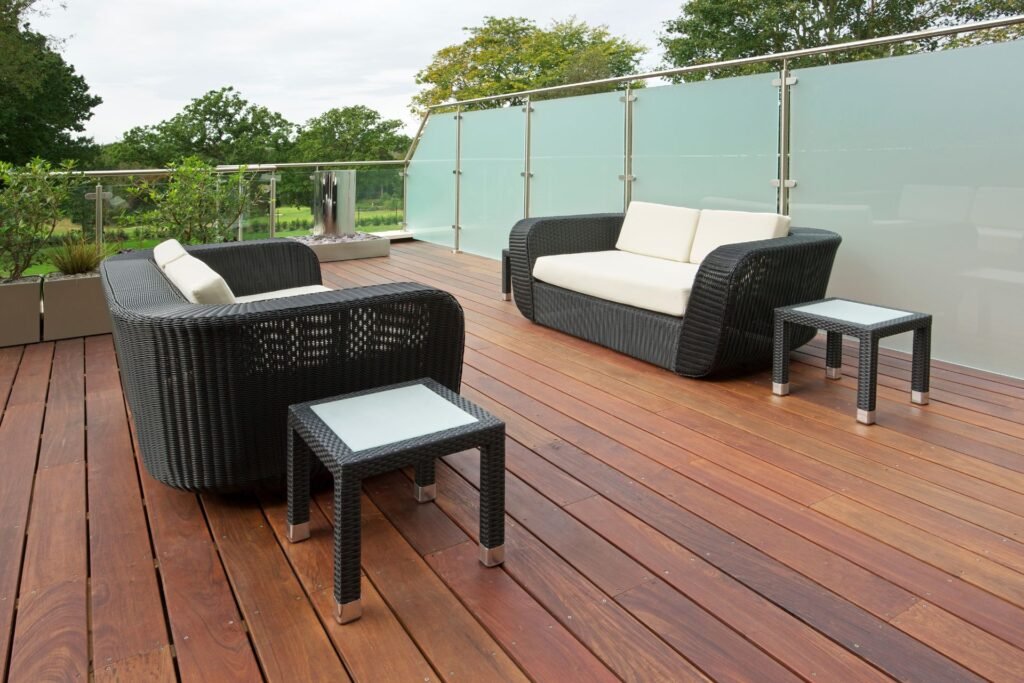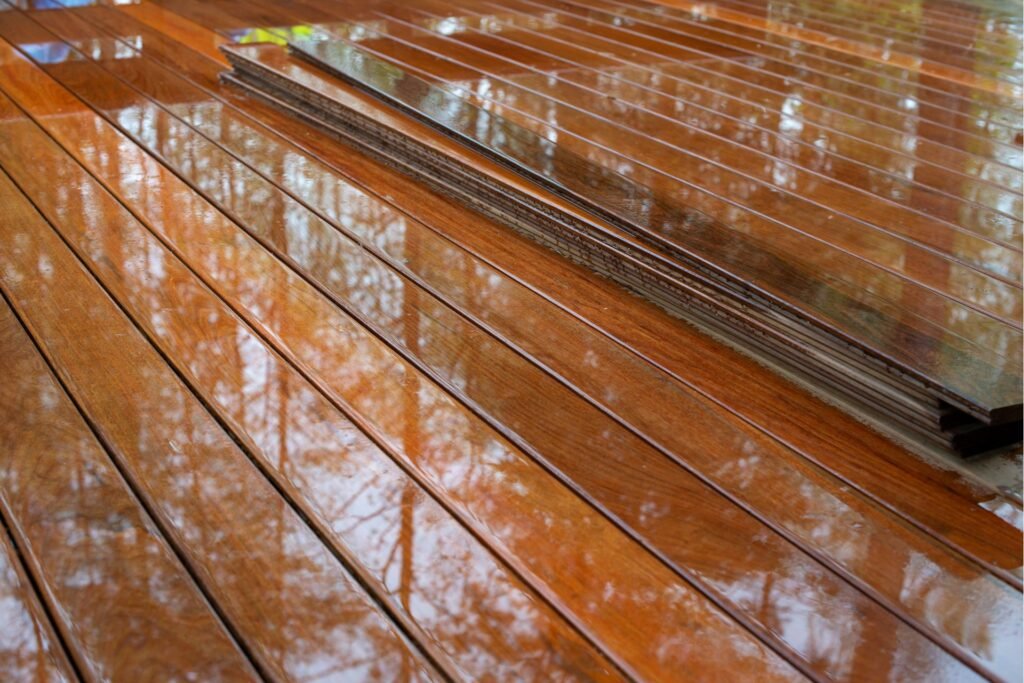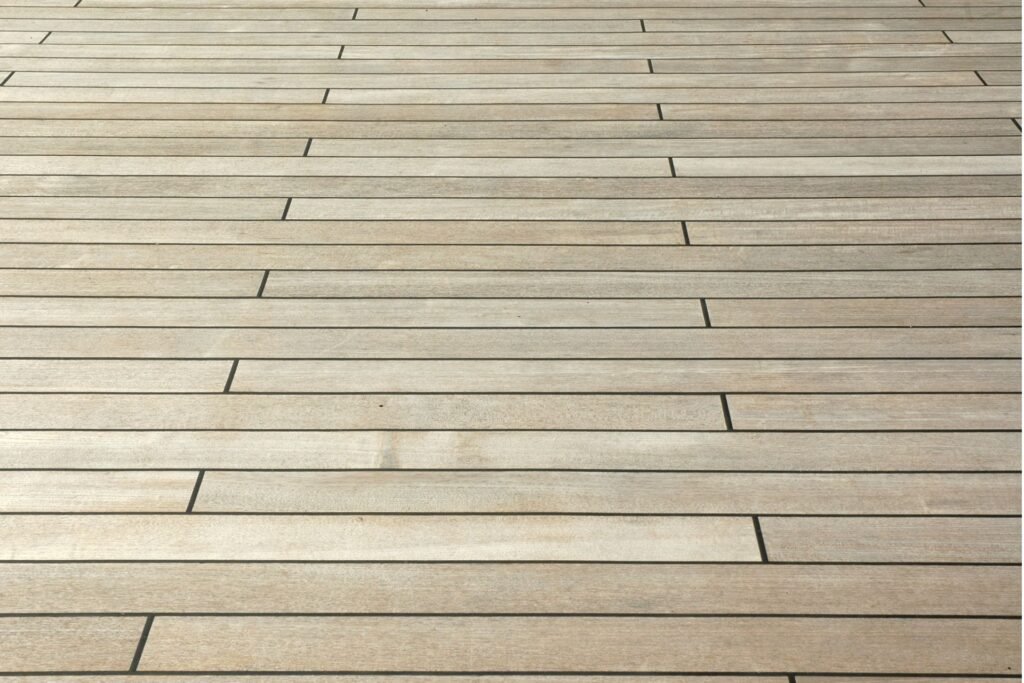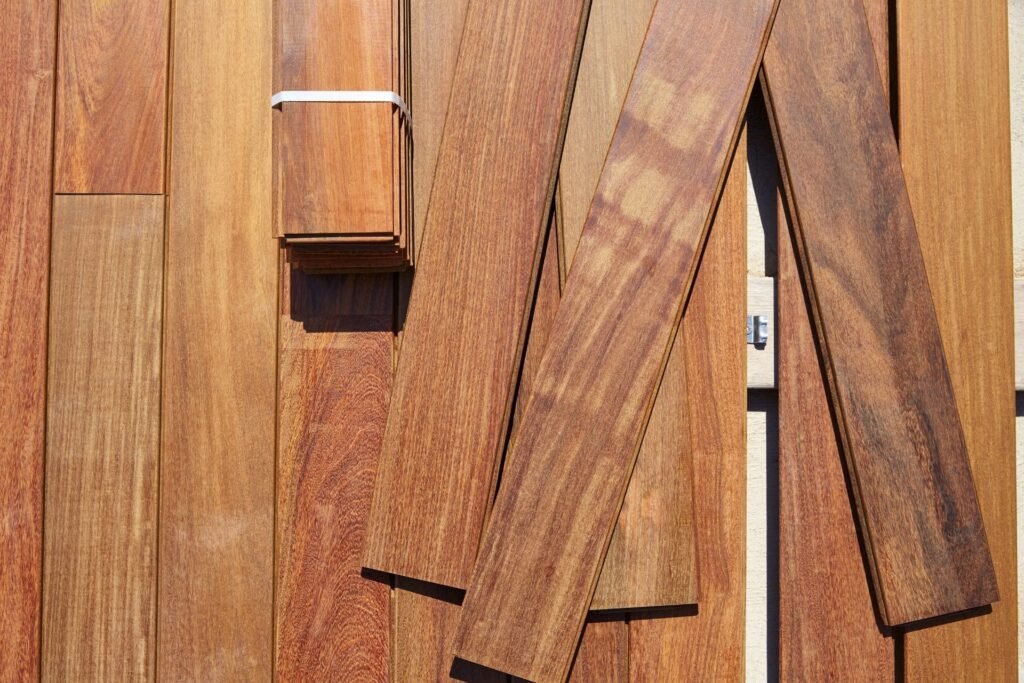
Ultimate Guide To How Much Does A Deck Cost Australia
Welcome to your go-to guide on understanding the costs associated with building a deck in Australia. Whether you’re dreaming of a cozy outdoor retreat for family barbecues or a spacious area for entertaining friends under the stars, a deck can significantly enhance the functionality and aesthetics of your home. However, navigating through the myriad of factors that influence the cost of building a deck can be daunting. From choosing the right materials to understanding labor costs and navigating local regulations, there’s a lot to consider. In this comprehensive guide, we’ll break down everything you need to know about deck costs in Australia. We aim to arm you with the knowledge to plan your project effectively, make informed decisions, and set a realistic budget. Whether you’re at the initial dreaming stage or ready to take the plunge and build your deck, this article is designed to guide you through the process, ensuring that your new deck not only meets your expectations but also adds value to your home for years to come. Let’s dive in and explore what it takes to bring your deck project to life, without any surprises when it comes to cost.
On average, the cost of building a deck in Australia ranges from $200 to $1,000 per square meter, influenced by choices in materials, size, and design complexity. Timber decks are generally more affordable, while composite or PVC materials fall towards the higher end of the price spectrum. Factors such as railings, built-in seating, lighting, permits, and adherence to local regulations can also impact the overall cost. Effective budgeting for your deck project requires considering these various elements and seeking professional advice to ensure a value-enhancing addition to your home.
Understanding The Basics Of Building A Deck
Adding a deck to your home is not just an upgrade; it’s an investment into creating lasting memories with family and friends, enhancing your home’s aesthetic appeal, and increasing its market value. Let’s dive into what makes a deck more than just an outdoor space and explore its various types and benefits.
What is a Deck?
A deck is an outdoor platform that extends from a house, devoid of a roof and often elevated from the ground. It serves as a versatile area for dining, entertaining, or simply relaxing outdoors. The value a deck adds to a home extends beyond the tangible; it offers an open sanctuary where moments are shared and memories are created. Additionally, from a financial standpoint, installing a deck can significantly increase a property’s market value, offering an impressive return on investment as it enhances the overall appeal of your home to potential buyers.
Types of Decks
There are several deck types, each catering to different preferences and home layouts:
Ground-Level Decks: These decks are flush with the ground and are perfect for yards that have little to no slope. They are accessible and can seamlessly integrate with your garden or backyard landscape.
Raised or Elevated Decks: Ideal for homes with a first floor elevated above the ground due to sloping landscapes or construction styles. Raised decks offer a great view of your surroundings and can include under-deck storage or space utilization.
Multi-Tier Decks: Multi-tier decks consist of areas on different levels connected by stairs or pathways. They are perfect for sloped lots, allowing the deck to follow the terrain and create distinct areas for various activities.
Freestanding Decks: Not attached to any structure, these decks can be placed anywhere in your yard, offering flexibility in design and location. They are a great option for highlighting a specific area of your garden or creating a secluded retreat.
Each deck type offers unique advantages and can be customized to fit the style and needs of your home, making it essential to consider the specific characteristics of your property and how you plan to use the space when deciding on the type of deck to build.
Benefits of Adding a Deck to Your Home
The benefits of adding a deck to your home are manifold:
Aesthetic Appeal: A well-designed deck can transform the look of your home, adding elegance and character. It acts as a bridge between your indoor and outdoor spaces, blending the two with style and cohesion.
Functional Space: Decks provide additional space for entertaining guests, dining al fresco, or enjoying quiet moments outside. It’s an outdoor extension of your living space where you can host barbecues, family gatherings, or simply relax in the open air.
Financial Advantage: Besides enhancing your home’s livability, decks offer a solid return on investment by increasing your property’s value. A well-built deck attracts potential buyers and can make your home stand out in the market.
In conclusion, understanding the basics of building a deck—including its types and benefits lays the foundation for adding valuable and enjoyable outdoor living space to your home. Whether you’re looking for an intimate ground-level deck or a dramatic multi-tiered structure, a deck can significantly enhance your home’s aesthetic, functional, and financial value.
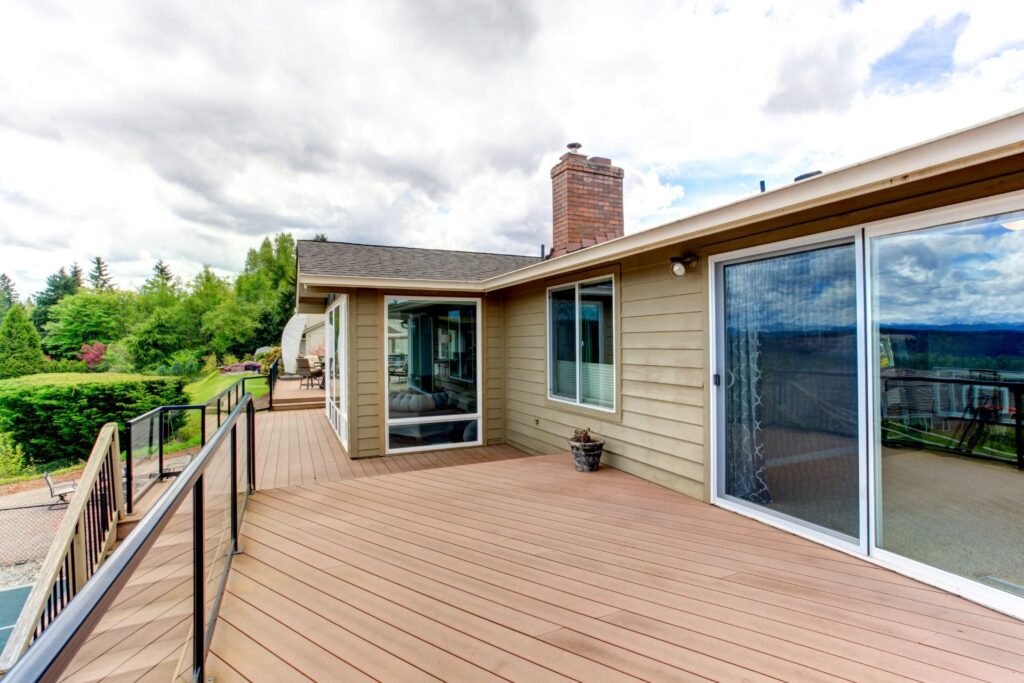
Factors Influencing The Cost Of A Deck in Australia
When it comes to enhancing your outdoor living space in Australia, building a deck is a popular choice. However, the cost of constructing a deck can vary widely based on several key factors. Understanding these can help you budget more effectively and make informed decisions that align with your financial and aesthetic goals. Let’s delve into the specifics of what influences the cost of a deck in Australia, ensuring you’re well-equipped to plan your project.
Material Choices
The choice of material is one of the most significant factors affecting the cost of your deck. Common materials include timber, composite, and PVC, each with its own set of pros and cons.
Timber: is a traditional choice that offers natural beauty. However, it requires regular maintenance such as staining or sealing to prevent weather damage. Hardwoods like Merbau and spotted gum are popular for their durability and resistance to pests, but they can be more expensive than softer woods.
Composite: decking is made from a blend of wood fibers and plastics. It’s designed to mimic the look of wood without the high maintenance. Composite materials are resistant to rot, pests, and fading but come with a higher initial cost.
PVC: decking is made entirely from synthetic materials, providing excellent resistance to moisture and wear. Like composite, PVC requires little maintenance but can feel less natural underfoot and is generally the most expensive option.
Choosing between these materials involves balancing cost with the desired longevity, maintenance, and aesthetic appeal of your deck.
Size and Design Complexity
The overall size of your deck directly impacts the cost, with larger decks requiring more materials and labor. Furthermore, the complexity of your deck design can play a significant role. Simple, rectangular decks are more cost-effective to build than those with multiple levels, curves, or other intricate features that require additional time and expertise to construct.
Labor Costs
Labor costs for deck construction can vary significantly by region and the level of contractor expertise. Experienced contractors may charge more but can provide valuable insights and a higher quality finish, potentially saving you money in the long run by avoiding costly mistakes or the need for repairs. It’s essential to get multiple quotes and check references to find the best balance between cost and quality for your project.
Additional Features
Incorporating features such as railings, steps, built-in seating, or lighting can greatly enhance the functionality and aesthetics of your deck but will also increase the overall cost. Each additional element requires more materials and labor. When planning these features, consider how they will be used and whether they are necessary to achieve your desired outdoor living space.
Permits and Regulations
Before starting your deck project, it’s crucial to understand the local permits and regulations. Compliance with building codes ensures safety and can prevent costly modifications down the line. The cost of permits can vary, and in some cases, you may need to pay for inspections. Incorporating this into your budget from the outset can help avoid unexpected expenses.
In conclusion, while the cost of building a deck in Australia can vary widely based on materials, size, design complexity, labor, additional features, and regulatory compliance, careful planning and consideration of these factors can help you create a beautiful, functional outdoor space within your budget. Remember, investing in quality materials and workmanship can save money in the long run by reducing maintenance costs and extending the life of your deck.

Average Deck Costs In Australia
Embarking on the journey of adding a deck to your home is both an exciting and complex decision. It’s not just about enhancing the aesthetic appeal of your outdoor space; it’s also a significant investment that requires thoughtful consideration. For homeowners across Australia, understanding the average costs involved in deck construction is crucial to planning and budgeting effectively. In this guide, we’ll delve deep into the financial aspects of building a deck, breaking down costs by material and size, and highlighting additional expenses that should not be overlooked.
Cost Breakdown by Material: Your Comprehensive Guide
Choosing the right material for your deck is pivotal, as it not only defines the look and feel of your outdoor space but also significantly influences the overall cost. Let’s explore the average cost ranges for different decking materials:
Treated Pine: is known for being a budget-friendly option, perfect for homeowners looking for an economical solution without compromising on quality. On average, treated pine decking might cost between $160 to $220 per square meter.
Hardwood decking: offers durability and a premium finish, making it a popular choice despite its higher price point, usually ranging from $200 to $320 per square metre.
Composite decking: providing the appearance of wood without the need for regular upkeep, can cost between $180 to $350 per square metre.
Aluminum decking: offers unmatched durability and resistance to the elements, with prices ranging from $220 to $270 per square metre.
Cost Breakdown by Size: Estimating Your Investment
The size of your deck plays a pivotal role in determining the overall cost. Here’s what you might expect to invest based on the size of the deck:
Small Decks (up to 15 square metres): are ideal for compact outdoor spaces and typically cost between $2,400 and $3,300.
Medium Decks (15 to 25 square meters): offer ample space for dining and relaxation, with costs ranging from $3,000 to $8,000.
Large Decks (more than 25 square meters): provide the perfect setting for those who love to entertain, costing anywhere from $8,100 to $14,000, depending on materials and design complexity.
Additional Costs to Consider: Beyond the Basics
While the main expense in deck construction revolves around material and size, several additional costs should be considered:
Design Fees: Opting for custom designs can significantly increase the overall cost of your deck project.
Permits: Depending on your location, obtaining a building permit may be necessary, adding to your budget.
Insurance: It’s crucial to ensure that your deck is covered by insurance to protect your investment.
Accessories: Features like railings, stairs, and lighting not only enhance the functionality and aesthetic of your deck but also add to the overall cost.
In conclusion, while the prospect of building a deck in Australia is an enticing one, it comes with a variety of costs that need careful consideration. By understanding the average costs associated with different materials and sizes, as well as taking into account the additional expenses that might arise, homeowners can make informed decisions that align with their budget and lifestyle needs. Whether you’re dreaming of a cozy retreat or a grand entertainment space, thorough planning and research are your best tools for bringing your vision to life without unwelcome financial surprises.
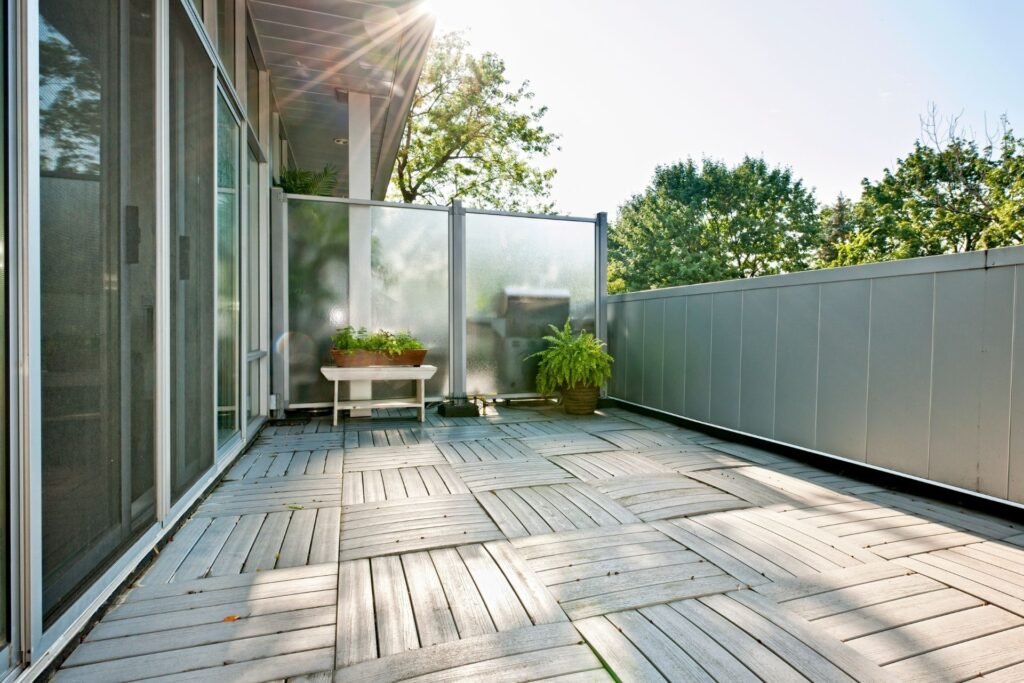
How To Budget For Your Deck Project
When embarking on the exciting journey of adding or renovating a deck to your home, setting a realistic budget is the cornerstone of a successful project. A well-planned deck not only enhances your outdoor living experience but also adds value to your home. However, navigating the financial aspects can be daunting. In this detailed guide, we’ll walk you through setting a realistic budget, uncovering ways to save money without sacrificing quality, and exploring financing options to bring your dream deck to life.
Setting a Realistic Budget
Understanding Your Needs and Preferences
The first step in budgeting for your deck project is to assess your needs and preferences thoroughly. Consider the size of the deck, the type of materials you prefer, the design complexities, and any additional features like built-in seating or lighting. These elements significantly impact the cost. Researching and setting priorities can help you balance your dream deck with your budget constraints.
Tips for Setting Your Budget
Get Multiple Estimates: Reach out to several contractors for quotes. This will give you a clearer picture of the cost and help you understand where you can negotiate or cut costs without affecting the outcome.
Include a Contingency Fund: Unexpected expenses can arise during deck construction. Adding a 10-20% contingency fund to your budget can save you from stress and financial strain.
Factor in Maintenance Costs: Consider the long-term maintenance costs of your chosen materials. Some materials may have a higher upfront cost but lower maintenance expenses over time.
Ways to Save Money on Your Deck Project
Choosing Materials Wisely
The material you choose for your deck plays a significant role in both the initial cost and long-term maintenance. For instance, composite decking, while more expensive upfront, requires less maintenance compared to wood decking. On the other hand, choosing local, sustainably sourced wood can offer savings and environmental benefits.
Timing the Project
The timing of your deck project can also affect the cost. Off-season construction, such as late fall or early winter, might secure you lower prices as contractors have fewer projects and may offer discounts to keep their teams busy.
DIY Where Possible
Consider taking on some of the project tasks yourself if you’re handy. Simple tasks like removing the old deck or finishing touches can save labor costs. However, ensure you have the skills and time to take on these tasks without compromising the project’s quality.
Financing Your Deck
Exploring Financing Options
Savings: Using your savings is the most straightforward way to finance your deck, avoiding interest and debt.
Home Equity Loan: If you have equity in your home, a home equity loan can be a cost-effective way to finance your deck, typically offering lower interest rates.
Financing Through Contractors: Some contractors offer financing options. While convenient, ensure you compare these rates with traditional loan rates.
In conclusion, planning and budgeting for your deck project require a balanced approach between your desires and your financial reality. By setting a realistic budget, exploring ways to save money, and understanding your financing options, you can achieve the deck of your dreams without financial distress. Remember, the goal is to create a space that brings joy and adds value to your home for years to come.
Crafting a deck project plan that aligns with your financial boundaries doesn’t mean compromising on the quality or aesthetics of your outdoor space. With careful planning, informed decision-making, and a bit of creativity, you can build a deck that meets your needs, reflects your style, and stays within your budget.

Choosing The Right Contractor
When embarking on any construction or renovation project, the choice of contractor you make is as crucial as the blueprint for the project itself. The right contractor doesn’t just bring your vision to life; they ensure the journey towards its realization is smooth, within budget, and on schedule. Therefore, in this section, we delve into the pivotal task of choosing the right contractor, emphasizing the importance of selecting a qualified professional and offering guidance on how to effectively find, evaluate, and make the final selection.
The Importance of Choosing a Qualified Contractor
Selecting a qualified contractor is the cornerstone of project success. A skilled contractor brings invaluable expertise, ensuring that all work is up to code, meets safety standards, and aligns with your vision and expectations. They are the maestro orchestrating the complex symphony of construction tasks, managing timelines, sourcing materials, and coordinating with subcontractors. Beyond the technical prowess, a good contractor communicates effectively, keeping you informed of progress and challenges, which translates to peace of mind throughout the project.
How to Find and Evaluate Contractors
Finding the right contractor requires a mix of research, due diligence, and keen judgment. Here are actionable tips to guide you through this process:
1. Start with Referrals: Word of mouth remains a powerful tool. Ask friends, family, or professionals like architects and real estate agents for recommendations. Personal experiences provide insight into a contractor’s reliability, quality of work, and customer service.
2. Check References and Past Work: Once you have a list of potential contractors, ask for and follow up on references. Inquire about their experience working with the contractor and the quality of the work completed. If possible, visit past projects to assess the craftsmanship firsthand.
3. Verify Licenses and Insurance: Ensure any contractor under consideration is licensed to perform the work in your area and carries the necessary insurance, including liability and workers’ compensation. This protects you in case of accidents or damage to your property.
4. Compare Quotes: Solicit multiple quotes to compare prices, but beware of quotes significantly lower than others, as this could be a red flag for cutting corners or a lack of understanding of the project’s scope.
5. Interview Candidates: Meeting face-to-face or via video call allows you to gauge their professionalism, communication skills, and whether they’re a good fit for your project. Prepare a list of questions to assess their experience, process, and how they handle challenges.
6. Understand Contracts and Payment Schedules: A clear, detailed contract protects both parties. It should outline the scope of work, materials to be used, timelines, payment schedules, and how changes to the project will be handled. Avoid contractors who demand full payment upfront; a staggered payment plan after reaching specific milestones is standard practice.
By following these steps, you significantly increase your chances of hiring a contractor who will not only meet but exceed your expectations. Remember, the goal is to find a partner who shares your vision, communicates transparently, and can deliver your project with the quality, timing, and budget you expect. Investing time in selecting the right contractor is investing in the success of your project.

Maintenance And Upkeep
Maintaining Your Deck: A Comprehensive Guide
Your deck is more than just an outdoor extension of your home; it’s a place for relaxation, entertainment, and making memories. However, to ensure it remains a welcoming retreat for years to come, regular maintenance is crucial. The upkeep needed can vary significantly based on the materials used in your deck’s construction, so let’s break down the basic maintenance requirements for different types of decks.
Wooden Decks: Timeless and Traditional
Wooden decks, known for their natural beauty, require a bit more TLC to combat the elements. Annually, a thorough cleaning to remove dirt, mildew, and algae is a must. Applying a water-repellent finish every two to three years will help protect the wood from moisture, reducing the risk of rot and warping. For those with cedar or redwood decks, a clear sealer will preserve the wood’s natural color while offering protection.
Composite Decks: Low Maintenance, High Enjoyment
Composite decking offers a durable and low-maintenance alternative to traditional wood. These decks need less frequent attention, but that doesn’t mean you can neglect them. An annual cleaning with soap and water is recommended to keep the surface looking fresh. Avoid using harsh chemicals that can damage the composite material. For tougher stains, consult the manufacturer’s guidelines for recommended cleaning products.
Vinyl Decks: Easy Care for Busy Lives
Vinyl decking is another low-maintenance option, boasting easy cleanup and resistance to weathering. Routine cleaning with mild soap and water will keep your vinyl deck in pristine condition. Steer clear of abrasive cleaners and scrubbers, which can leave scratches on the surface. Periodic inspections for any signs of wear or damage can help address issues before they escalate.
Long-Term Care: Protecting Your Investment
A well-maintained deck not only enhances the enjoyment of your outdoor space but also contributes to the overall value of your home. Here are some tips to extend the life of your deck and maintain its value:
Regular Inspections: Start each season by inspecting your deck for loose boards, protruding nails, or structural damage. Early detection of these issues can prevent more significant problems down the line.
Prompt Repairs: Addressing repairs promptly can save you time and money. Whether it’s replacing a worn board or securing a loose railing, keeping on top of maintenance tasks ensures your deck remains safe and inviting.
Cleanliness is Key: Beyond the annual deep clean, regular sweeping to remove debris and leaves can prevent mold and mildew growth, especially in shaded areas.
Seal the Deal: For wooden decks, resealing is a critical step in long-term care. This protective barrier wards off moisture, sun damage, and discoloration.
Mind the Gap: Ensure proper spacing between boards to allow for water runoff and air circulation, reducing the risk of water damage.
By adopting a proactive approach to deck maintenance, you not only extend the life of this cherished outdoor space but also protect your investment. Regular upkeep, tailored to the specific needs of your deck’s material, ensures that your deck remains a safe, enjoyable, and valuable part of your home for years to come.
In crafting this guide, we’ve aimed to provide homeowners with the knowledge needed to maintain and cherish their decks. Remember, a well-cared-for deck not only offers endless enjoyment but also adds to the aesthetic and financial value of your home.
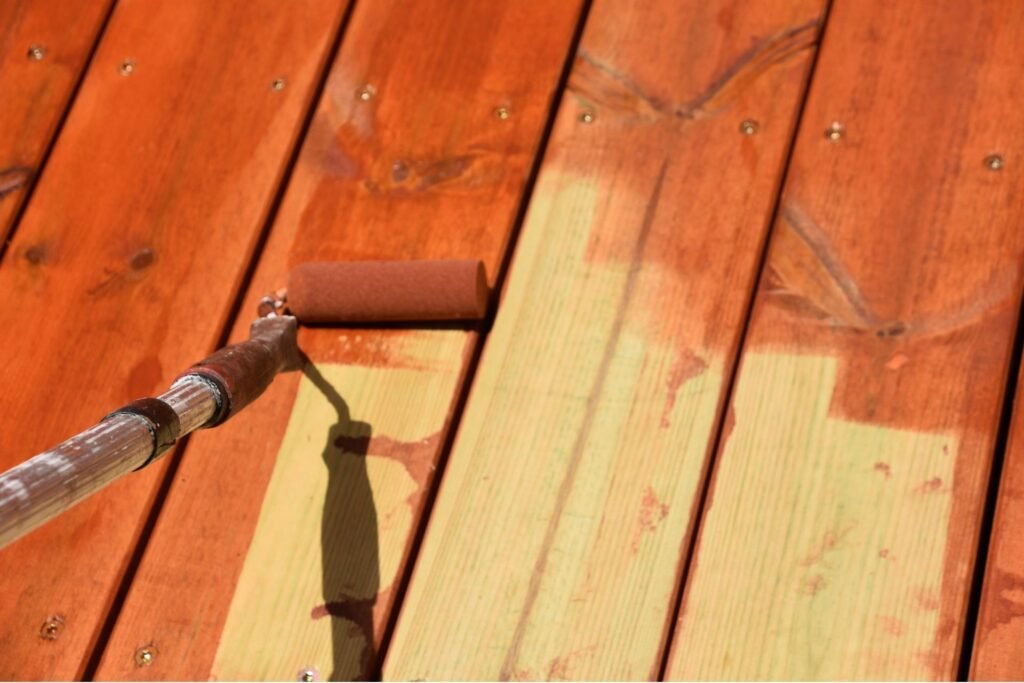
FAQs: About How Much Does A Deck Cost Australia
The average cost varies widely, ranging from $200 to $1,000 per square meter, depending on the materials, size, and complexity of the design.
Material choice is a significant factor, with options like timber being more cost-effective, while composite and PVC materials tend to be at the higher end due to their longevity and lower maintenance requirements.
Yes, the size and complexity of the deck’s design directly impact costs. Larger decks and those with complex designs or features like multiple levels or integrated seating will require more materials and labor, increasing the overall cost.
Adding features such as railings, steps, built-in seating, or specialized lighting can increase the overall cost due to the extra materials and labor involved.
Yes, obtaining the necessary permits and ensuring your deck complies with local building regulations can add to the cost. This includes fees for permits and potentially hiring a professional to ensure compliance.
Labor costs can vary significantly depending on the contractor’s experience and the project’s location. It’s a crucial component of the overall cost, often accounting for a significant portion of the budget.
Choosing cost-effective materials, planning your project during off-peak seasons, and simplifying the design are ways to save money. Additionally, doing some work yourself can reduce labor costs, provided you have the necessary skills and experience.
Selecting a qualified and experienced contractor is crucial for ensuring the quality and durability of your deck. You can find a reputable contractor through referrals, checking online reviews, and verifying their credentials and past work.
Timber decks require regular sealing and staining to maintain their appearance and longevity, while composite and PVC decks need less maintenance, typically only requiring cleaning to keep them looking good.
Financing options include using savings, applying for a home equity loan, or exploring financing options offered by contractors. Always compare offers and consider the long-term costs before deciding on the best financing method for your situation.
Conclusion
Embarking on the journey of building a deck in Australia is an exciting endeavor that not only enhances the aesthetics and functionality of your outdoor space but also requires a deep understanding of the various factors influencing its cost. From the choice of materials, such as traditional timber or low-maintenance composite decking, to the size and complexity of the design, and the fluctuating labor costs across different regions, each aspect plays a crucial role in the overall investment. To ensure the most value for your effort and money, it’s essential to carefully consider your specific needs, conduct extensive research on materials and designs, and compare quotes from multiple contractors. Consulting with professional deck builders and design experts can also provide invaluable insights tailored to your unique situation, helping you navigate the complexities of the project. Ultimately, with thoughtful planning, research, and professional advice, you can create a beautiful, functional deck that aligns with your lifestyle and budget, ensuring lasting enjoyment and satisfaction for years to come.
Menu
- About
- Blog
- Contact Us
- Deck Builders Blue Mountains
- Patio Builders Blue Mountains
- Patio Builders Penrith
- Pergola Builders Blue Mountains
- Pergola Builders Penrith
- Privacy Policy
- Sitemap
- Terms And Conditions
About the Author:
Mike Veail is a recognized digital marketing expert with over 6 years of experience in helping tradespeople and small businesses thrive online. A former quantity surveyor, Mike combines deep industry knowledge with hands-on expertise in SEO and Google Ads. His marketing strategies are tailored to the specific needs of the trades sector, helping businesses increase visibility and generate more leads through proven, ethical methods.
Mike has successfully partnered with numerous companies, establishing a track record of delivering measurable results. His work has been featured across various platforms that showcase his expertise in lead generation and online marketing for the trades sector.
Learn more about Mike's experience and services at https://theleadguy.online or follow him on social media:





